The key to success when growing any crop is proper agricultural technology. For cabbage, the main activities in open ground are fertilizing and watering. Without them, you won’t be able to get not only high-quality products, but you may even be left without a harvest at all.
|
The main condition for obtaining a high yield is competent agricultural technology. |
| Content:
|
How to feed cabbage seedlings
It depends on the variety of cabbage and where it grows: at home or in a greenhouse. Seedlings of early varieties are fed once, late varieties - 2-3 times.
It is advisable to apply fertilizers in liquid form to seedlings; they are absorbed faster and have an effect. Dry fertilizers are not used at home; in the greenhouse, after applying them, the seedlings are shed generously.
At home, the first feeding is done 2-4 days after picking. Apply complex liquid fertilizers
- Baby
- Agricola
- Krepysh or potassium humate
A week after feeding early cabbage planted in open ground, and if this is not possible, then buried in a greenhouse. As soon as she grows a little, she is planted. And only if the cabbage is very frail, it is fed again. For better development of the root system, Kornevin is added, and to gain green mass, azofoska or nitrophoska is added.
First feeding late varieties carried out after the appearance of the first true leaf. Use complex fertilizers with sufficient nitrogen content:
- Baby
- Aquarin
- Intermag vegetable garden
The second one is done 10-15 days after the first one. Cabbage is watered with weed infusion or azofoska.
|
These seedlings need to be well fed. |
The third feeding is required for frail and overgrown seedlings, which are not yet suitable for planting in the ground. In such plants it is necessary to stimulate the growth of the root system. To do this, root formation stimulants Etamon or Kornevin are added. A week later, the seedlings are planted, discarding all unsuitable specimens.
Preparing the beds
The bed for cabbage is prepared in the fall. Since all types of cabbage love neutral or slightly alkaline soil (pH 6.5-7.5), acidic soils are deacidified, and highly alkaline soils are alkalized.
Deoxidation
To reduce acidity, the soil is limed. It is impossible to apply lime together with manure, since a chemical reaction occurs and compounds are formed that are inaccessible to plants. Lime is applied in the fall 2-3 months before adding manure. You can apply one fertilizer in the fall, and a second in the spring. Usually lime is added in the fall (except fluff).
The lime content in fertilizers varies and is indicated in % of active substance (a.i.).
Certain lime fertilizers are suitable for each soil type. On sandy loam soils, dolomite flour or ground limestone is added. They contain magnesium, which is deficient in such soils. On heavy and medium loams, add slaked lime.
On soddy-podzolic soils, where there is a deficiency of calcium, chalk and lake lime are used.
The application rate depends on the acidity of the soil; the higher it is, the more fertilizer is required. On loamy soils at a pH of 5.1-5.5, apply 300 g of fertilizer per m2, on sandy 150-200 g per m2.
Video about soil deoxidation, very useful information I recommend watching:
Leaching
It is also held in the autumn. The application rate depends on the alkalinity of the soil. When the soil is strongly alkalized, bog peat is added, which is a good deoxidizer.
- At pH above 9, the application rate is 3 buckets per m2,
- at pH 9-8 - 2 buckets/m2,
- at pH 8-7.5 1 bucket/m2.
Instead of bog peat, you can use litter from coniferous trees. If the soil is not very alkalized (pH 7.5-7.8), then physiologically acidic fertilizers are used: manure (especially fresh) 2-3 buckets per 1 m2.
|
Manure and peat with pine litter can be applied simultaneously, they somewhat enhance the effect. |
Another simple and interesting way to deoxidize the soil:
Fertilizer application
In the fall, manure must be applied to any type of cabbage. On poor soils 3 buckets of fresh manure per m2, on black soils 1 bucket per m2. It is preferable to apply mullein or horse manure.
The rate of bird droppings is reduced by 2 times, since it is too concentrated. Pig manure is not used. If there is no manure, then cover up the carrion of fruit trees (pears, apples, plums) or food debris (tomatoes, cabbage leaves, potato peelings). Naturally, all organic residues should not be affected by diseases.
All other fertilizers are applied directly to the holes when planting seedlings in the ground. Add 0.5-1 cup of ash and nitrogen-phosphorus fertilizers (nitroammophosphate, nitrophoska or ammonium nitrate + superphosphate) into the hole.
Ash must be used on acidic soils, as it protects cabbage from clubroot. All applied fertilizers are mixed with the soil.
Feeding cabbage during the growing season
Feeding depends on the type of cabbage. The cabbage, cauliflower, Brussels sprouts and leaf species have different fertilizer requirements. In addition, early and late varieties of cabbage have different requirements.
Feeding early cabbage
Cabbage includes white, savoy and red cabbage. Despite such diversity, they have the same feeding requirements.
Fertilizers are applied once every 10 days throughout the growing season.In the first half of the fertilizer, nitrogen and potassium should predominate, starting from the second half, i.e. from the 3-4th feeding, the dose of nitrogen is gradually reduced and the dose of phosphorus and microelements increases (especially for red cabbage), and the dose of potassium does not change .
Early cabbage is fed only at the root!
|
Cabbage seedlings in the ground are fed exclusively at the root |
1st feeding
It is carried out a week after rooting of seedlings. Water with infusion of manure (1 l/10 l of water), bird droppings (0.5 l/10 l of water), infusion of weeds (2 l/10 l of water) or humates (according to instructions).
If the seedlings are very frail or overgrown, then Kornevin or Etamon are added instead of organic matter. Heteroauxin (Kornerost) can also be used, but this drug is used strictly according to the instructions, since an overdose can destroy the plant.
As growth stimulants, cabbage is sprayed (only weak and overgrown specimens) with Zircon, Vympel, Epin, Aminazole. The latter drug is very effective on crops and young plants, if they are viable in principle, are transformed before our eyes.
After weak specimens have recovered, they are fed for the first time.
2nd feeding
They contribute weed infusion and potassium sulfate plus microelements (Uniflor-micro or Uniflor-bud). There should be as much potassium as nitrogen or even a little more, then the cabbage will not accumulate nitrates in the leaves.
Instead of weeds, you can use potassium humate + microelements or ecophosphate, but without adding microelements, since it contains all the necessary microelements in the optimal dose.
|
Preparation of green fertilizer from weeds |
3rd feeding
It is carried out when early cabbage begins to form a head of cabbage. Add infusion of ash and nitrophoska 1 tbsp.for 10 liters of water. But it is not advisable to apply ash and nitrogen fertilizers together. The minimum interval between them should be at least 9-12 hours.
4th and subsequent feedings
Of the macroelements, potassium should predominate, and the microfertilizer must contain boron, magnesium, manganese, and molybdenum. The best fertilizer for cabbage at this time is ecophosphate. In addition to it, you can use OMU (not suitable for acidic soils), Uniflor-micro, Harvest. You can use weed infusion 0.5 l/bucket of water (nitrogen is still needed in small quantities) + ash infusion 1 glass per bucket.
Feeding cabbage for setting a head of cabbage
To speed up the formation of heads of cabbage, cabbage is fed with the biological preparation Vesna - it promotes better setting of heads of cabbage and cleanses the soil of pesticide residues.
Fertilizer Solution grade A1. Contains N 8%, potassium 28%, as well as phosphorus and all trace elements. Helps speed up the process of setting heads. Particularly effective on white and red cabbage.
Simple superphosphate is also used during the period of crop formation. It contains phosphorus, potassium, nitrogen, calcium, magnesium and sulfur. The composition of the fertilizer may vary depending on the manufacturer. Use a hood. Dissolve 0.5 liters of extract in 5 liters of water and water the cabbage at the root.
2 weeks before harvesting the heads of cabbage, all feeding is stopped.
Feeding of medium and late varieties
This cabbage grows more slowly, so fertilizing is done once every 15-20 days. At the beginning of the growing season, the crop needs high doses of nitrogen against a background of high potassium content.
In the second half of the growing season, the dose of nitrogen decreases and the content of potassium and microelements increases. With a high nitrogen background in the second half of the growing season, plants accumulate nitrates in heads of cabbage.
1st feeding carried out 14 days after planting in open ground. If the plants do not take root well, they are first sprayed with Aminazole, and then, when they get stronger, they are fertilized. Use organic matter (infusion of manure, compost, weeds, chicken droppings) or mineral fertilizers: ammonium nitrate 3 tbsp/bucket of water, urea 2 tbsp, humates.
2nd feeding takes place on the 20th of June. Add an infusion of manure or weeds, potassium nitrate or potassium sulfate and microelements (Uniflor-bud, Uniflor-micro). Microelements are important especially for red cabbage, which ripens 10 days earlier than white cabbage.
3rd feeding. They do it in mid-July. For mid-season varieties, the dose of nitrogen is reduced. Add ecophoska, nitrophoska, and every other day an infusion of ash. Late varieties are still gaining vegetative mass, so they can be fed with organic matter, humates or urea + ash infusion or microfertilizers.
|
Ammofoska (ekofoska) is a domestic fertilizer, an analogue of Kemira - Universal. |
4th feeding done in early to mid-August. Water with ecophosphate or infusion of ash + extract of simple superphosphate. Instead of ash, you can use potassium sulfate + Uniflor-micro.
5th feeding carried out in September if the cabbage has not yet begun to form a head. For better setting of heads of cabbage, it is watered with ammonium molybdate. Although this element is not necessary for the crop, it is part of some plant proteins, stimulates their accumulation in the leaves and thus contributes to the formation of heads of cabbage.
The last fertilizing is carried out a month before harvesting.
Folk remedies
Ammonia, boric acid, iodine, yeast, and hydrogen peroxide are often used.
Ammonia or ammonia is a highly volatile nitrogen fertilizer with a pungent odor. It can be used in the first stage of the growing season, when plants grow leaves. But it is not used in combination with manure, weed infusion, urea and other nitrogen fertilizers, since there will be an excess of nitrogen.
In addition, ammonia is not an environmentally friendly and safe substance, as many believe. It is very volatile and most of it evaporates from the soil surface. It is better to replace it with any nitrogen fertilizer.
Boric acid - this is an element that influences the setting of heads of cabbage. Only powder is used and only during the period of crop formation. 2 g of boric acid is diluted in 5 liters of water and fed to the crop during the setting and active growth of heads of cabbage.
|
Boric acid can be used in the garden, but without fanaticism |
Watering with iodine. Iodine is a trace element and the culture does not need it in large quantities. But in microdoses it accelerates the formation of heads of cabbage. It is especially good to use it with boric acid, adding 1.5 ml to the finished solution. As an independent remedy, dissolve 5-7 drops in 5 liters of water and water the plot. The consumption rate is 0.5 l per plant.
Yeast. Absolutely useless substance for cabbage. They contain many vitamins, but do not contain anything that can be absorbed by plants. From them the culture will not grow by leaps and bounds.
Feeding them is self-deception. When plants need nutrients, and they are fed with yeast, the deficiency of macro- and microelements is not replenished, but intensified. It is better to replace them with manure, ash or weed infusion.
Hydrogen peroxide. Contains hydrogen and oxygen. There is nothing beneficial for plants in it. Its introduction is wasted effort and self-deception.
Feeding broccoli and cauliflower
These cabbages need potassium more than nitrogen, but on poor soils you will still have to feed them with manure or weed infusion once every 10 days. But the manure must be rotted, since neither broccoli nor cauliflower tolerate fresh manure.
If you give them a lot of nitrogen, this delays the formation of heads; cabbage may not set them even by September. Another feature is that after planting in open ground they require a lot of microelements, especially boron and molybdenum.
1st feeding. Begin feeding broccoli and cauliflower when the plants have a new leaf. On poor soils (peaty, soddy-podzolic, etc.), apply an infusion of rotted manure or weeds 0.5 liters per plant. On all other soils, they are fed with complex fertilizers OMU, Mortar A1, etc.
|
Mortar grade A1 content: nitrogen 8%, phosphorus 6% and potassium – 28%. There is also magnesium - 3% and other elements in a volume of up to 1.5%. |
2nd feeding. Either complex fertilizers or an infusion of ash are applied. 1 liter of infusion is diluted in 10 liters of water and 1 tbsp is added to it. l potassium sulfate.
Next, organomineral and mineral supplements are alternated. When the cabbage grows 5-6 leaves, microfertilizers from the Uniflor series begin to be added to the fertilizing: Uniflor-micro or Uniflor-bud.
Broccoli without any chemicals:
Feeding during the formation of heads
Plants are watered with Solution, Ecofoska or Uniflor-micro fertilizer. If there is none of them, then use an infusion of ash with the addition of boric acid (2 g per 10 liters of the finished solution).
If the cabbage does not set a head for a long time, add ammonium molybdate 0.5 -1 g per 10 liters of finished fertilizer to any fertilizer. In the absence of boron in the fertilizing, the cabbage produces a very small, loose head.
The last feeding is carried out 10 days before the expected harvest, although it is often impossible to predict, especially with broccoli.
Feeding Chinese cabbage
Beijing needs a high nitrogen background to grow leaves. However, to prevent nitrates from accumulating in the leaves, high doses of potassium are given at the same time. The amount of feeding of Chinese cabbage depends on the ripening period. Early varieties are not fed at all or once (depending on the soil). Medium varieties are fed 1-2 times, late varieties 3 times per season.
1st feeding. This is done when the crop has 3-4 true leaves. Early varieties are fed only on poor soils. On fertile land, they only need fertilizer applied before sowing. An infusion of weeds, humates or organomineral fertilizers (OMF) are applied. When using infusions of weeds or humates, add 1 tbsp. potassium sulfate per 10 liters of prepared solution. You can add ash, but 2-3 days after using the weed infusion.
2nd feeding. Medium varieties are fed with humates, late varieties are fed with infusion of manure. Potassium sulfate or ash is also a plus.
3rd feeding. Humates + potassium sulfate for late varieties.
|
Uniflor Bud is a fertilizer that is used in the second half of plant development. Helps plants produce more flowers and fruits. This is also a very good remedy for decorative, flowering plants that are grown in a flowerbed or in an apartment. Composition: potassium – 88 g/l, nitrogen – 47 g/l, phosphorus – 32 g/l, magnesium – 5 g/l, sulfur – 6.6 g/l and 18 more elements. |
If the Pekinka stubbornly does not form a head of cabbage, then additionally apply Uniflor-micro or Uniflor-bud microfertilizers. If there is no effect, boric acid and ammonium molybdate are used, which accelerate the process of head formation. Prepare a solution of 2 g of boric acid + 0.5 g of ammonium molybdate per 10 liters of water. Water at the root. The solution consumption is 0.5 l per plant.
All fertilizing is carried out after watering the crop.
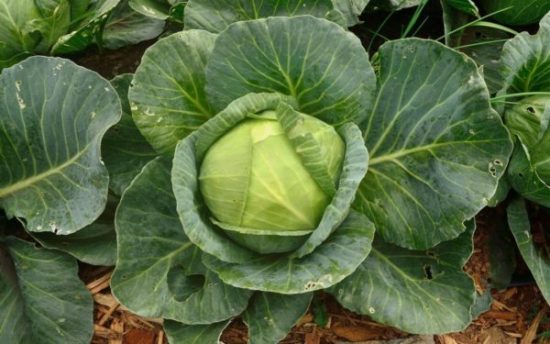
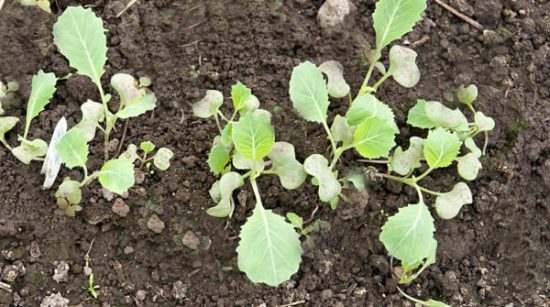
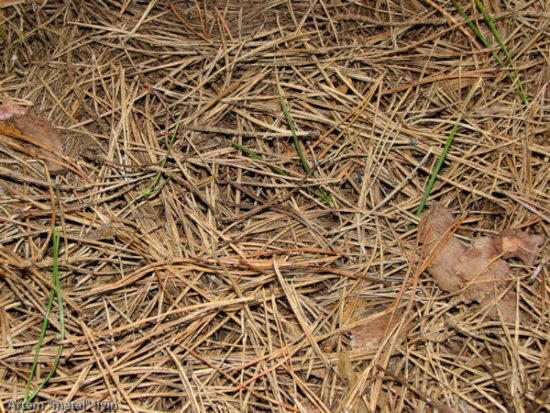
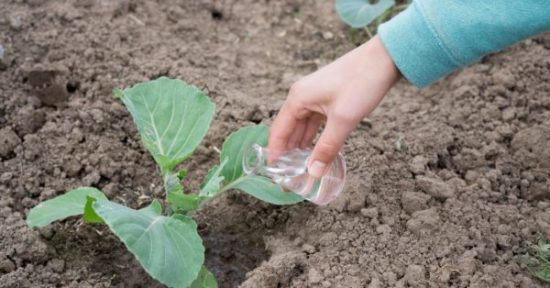
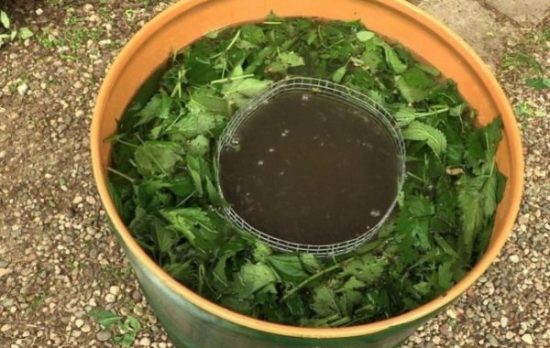
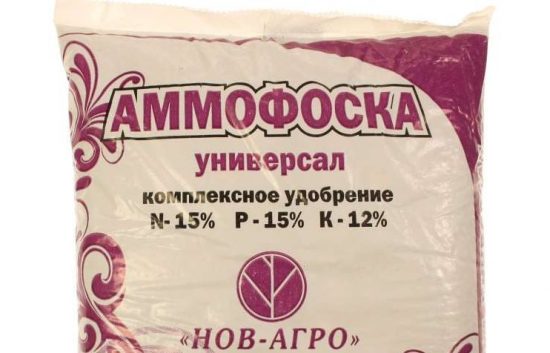


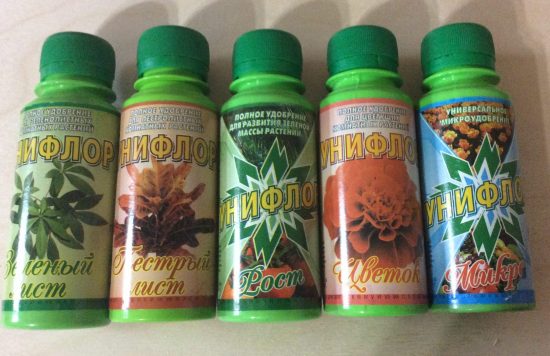

 (1 ratings, average: 4,00 out of 5)
(1 ratings, average: 4,00 out of 5) CUCUMBERS NEVER GET SICK, I'VE BEEN USING ONLY THIS FOR 40 YEARS! I SHARE A SECRET WITH YOU, CUCUMBERS ARE LIKE THE PICTURE!
CUCUMBERS NEVER GET SICK, I'VE BEEN USING ONLY THIS FOR 40 YEARS! I SHARE A SECRET WITH YOU, CUCUMBERS ARE LIKE THE PICTURE! You can dig a bucket of potatoes from each bush. Do you think these are fairy tales? Watch the video
You can dig a bucket of potatoes from each bush. Do you think these are fairy tales? Watch the video
 How our fellow gardeners work in Korea. There is a lot to learn and just fun to watch.
How our fellow gardeners work in Korea. There is a lot to learn and just fun to watch. Eye trainer. The author claims that with daily viewing, vision is restored. They don't charge money for views.
Eye trainer. The author claims that with daily viewing, vision is restored. They don't charge money for views. A 3-ingredient cake recipe in 30 minutes is better than Napoleon. Simple and very tasty.
A 3-ingredient cake recipe in 30 minutes is better than Napoleon. Simple and very tasty. Therapeutic exercises for cervical osteochondrosis. A complete set of exercises.
Therapeutic exercises for cervical osteochondrosis. A complete set of exercises. Which indoor plants match your zodiac sign?
Which indoor plants match your zodiac sign? What about them? Excursion to German dachas.
What about them? Excursion to German dachas.